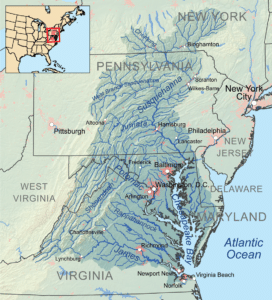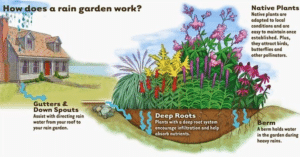How Tom Bulger Took Advantage of Rain Garden Incentives to Address Local Water Pollution
- Client: Tom Bulger
- Project: Rain Garden
- Geographic Area: Washington DC Metro Area
A conversation about environmental gravitas ends in a story about fraternity brothers returning a cadaver to a hospital before dawn. Thus is the intro to the wild ride that is Tom Bulger.
Mr. Bulger is a man whose resume carries a lot of prestige. He has been a Federal lobbyist for many years.
He serves on the board of WMATA (Washington Metropolitan Area Transportation Authority), and he is the reason many counties received funding under initiatives like the Clean Water Act. Plus, he was the policy advisor to one of the most influential federal transportation commissions since the Clay Commission of the 1950s (which conceptualized and created the federal highway system).
Bulger is accomplished, yet humble, a man that even with his schedule still manages to make it to many West Virginia University (WVU) football games.
With an environmental policy and transportation background, it is not so surprising that Bulger and his wife are early adopters to stormwater management.
“The biggest motivational factor for my wife and me was the Chesapeake Bay Alliance,” says Bulger. “We have a connection there, and we’re fortunate enough to have a boat on the bay 7-9 months out of the year.”

“We’re very involved in our marina in Eastport, Maryland. “But now I don’t go in the water anymore. After a big rainstorm or hurricane, you can even see a big plume in the Bay from space that depicts the pollution. People get infections.”
There are also economic concerns with the Bay’s water quality influencing local markets and restaurants.
“Crabs are scarce. Prices have tripled because the bay is dying in some places-the grass on the floor of the bay can’t hide the crabs”, says Bulger.”So there’s no place for the crabs to hide, and fish are eating and depleting the source.”
Concerns over economic and environmental impact, plus a desire to give his wife another area to garden in, led to Bulger contacting Rainplan to help him put in a rain garden on his property. A rain garden is a shallow dip in the ground with vegetation explicitly planted to help pull water back into the earth before running off into streets and drains.
“The long and short of it is that my wife has another garden. The idea that Rainplan would be our concierge and that they were working with Casey Trees, we were attracted by that,” says Bulger. (Casey Trees is a Washington DC-area nonprofit dedicated to restoring tree canopies and partners in completing rain gardens in the area).
Due to added curb appeal and comparatively easy installation, rain gardens have become a popular choice for water-conscious property owners. Yet, many property owners are either unaware of available incentives or the process of filing an application and finding the right contractor to complete the work is overwhelming.
“I had all of our neighbors come over to see our rain garden,” says Bulger. “I told them how inexpensive it was because we received $2,200 from the Bay Alliance [as an incentive package]. It was a no-brainer. It only cost us $700.”
Rainplan’s job is to make sure all incentive applications are filed and appropriate funding is offered, plus they find vetted contractors in the area to come place bids on the project—matching the owner to the best possible price. Essentially a one-stop spot for getting a stormwater project funded and completed.
“There’s so much on the internet now. So many emails and you don’t know what’s too good to be true,” says Bulger. “Rainplan does seem too good to be true, but I can’t say enough about it.”
With a rain garden installed on his property, Bulger can offset soil erosion that drains into a nearby creek-which then drains into the Chesapeake Bay. A simple step in addition to the work the Bulger family already does to protect their neighborhood’s environment.

Bulger’s rain garden right after installation.
“The rain garden came out wonderfully and it’s a really big addition. It makes the backyard look better and we aren’t losing our grass to erosion,” states Bulger. “Every little bit helps. There are a lot of young families in the Chevy Chase area, we’re surrounded by little kids and I know they get some curriculum in school about how the Bay impacts their lives.”
Over 150 rivers stream into the Chesapeake drainage basin. It’s home to archaeological sites such as shipwrecked canoes–it’s a piece of American history that also directly connects the economies of 6 neighboring states (New York, Pennsylvania, Delaware, Virginia, District of Columbia, and West Virginia).
Protecting the bay from landscape drainage is critical in preserving the livelihoods of these areas. Even small steps like a rain garden on Bulger’s gorgeous property can have a huge collective impact on the Bay’s watershed.
As for Bulger’s fraternity cadaver story, that’s another article for another time.


